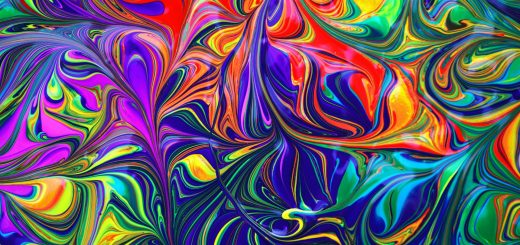Yantra Artistry: Creating Sacred Diagrams

Hey there, amazing readers! 🖐️ Just a quick note: yes, we know there are a lot of ads here. Trust us, we get it—it’s not the prettiest look, but they help us keep this blog alive and kicking. Those pesky little ads cover the costs of all the behind-the-scenes magic, from hosting and tech stuff to creating content we hope you’ll love.
We’re committed to delivering quality posts, and your support (even just sticking around despite the ads) means everything to us. So, bear with us, and thanks for helping us keep the good vibes rolling. Now, on to the fun stuff! 😉
TRANSLATE BUTTON AT THE END OF THE ARTICLE
A Quick Overview
Yantra art is a form of sacred geometry that has been practiced in Hinduism for centuries.
These intricate diagrams are believed to have spiritual and mystical powers and are used for meditation, healing, and spiritual growth.
Creating yantras requires precision, focus, and an understanding of symbolism and geometry.
In this article, we will explore the origins of yantra art, its significance in Hinduism, different types of yantras, tools and materials needed for creating yantras, step-by-step guide to making yantras, symbolism and meaning in yantra art, and its relevance in modern contexts, healing practices, Vedic astrology, and Tantric rituals.
The Origins of Yantra Art
Yantra art has its roots in ancient Hindu scriptures and texts, particularly in the Tantric tradition.
The word "yantra" is derived from the Sanskrit word "yam," meaning to control or restrain, and "tra," meaning instrument.
Yantras are considered to be visual representations of mantras, and they are believed to embody the cosmic energies of the deities they represent.
The earliest evidence of yantras can be found in the Vedas, the oldest sacred texts of Hinduism, dating back thousands of years.
Understanding Sacred Geometry
Sacred geometry is a belief system that sees geometric patterns and shapes as a universal language that can reveal the nature of reality and the interconnectedness of all things.
In yantra art, sacred geometry is used to create intricate designs that are believed to have symbolic and spiritual significance.
These geometric patterns are often based on mathematical ratios, such as the Fibonacci sequence, and are thought to resonate with cosmic energies and higher consciousness.
Importance of Yantras in Hinduism
Yantras play a significant role in Hinduism as tools for meditation, worship, and spiritual practice.
They are used to focus and channel the energies of specific deities, planets, or cosmic forces, and are believed to help the practitioner connect with the divine and achieve spiritual growth.
Yantras are also used in rituals and ceremonies to invoke the blessings and protection of deities, and to ward off negative energies and influences.
Tools and Materials for Yantra Creation
Creating yantras requires a few basic tools and materials, including:
Drawing compass
Ruler
Pencil
Paper or canvas
Colorful pens or markers
Protractor (optional for more complex designs)
Additionally, traditional yantra artists may use specific sacred powders, like turmeric or sandalwood, to infuse the yantra with spiritual energy and intention.
Step-by-Step Guide to Creating Yantras
Here is a simple step-by-step guide to creating a basic yantra:
Choose a deity or cosmic force you wish to connect with.
Draw a square or circle on your paper or canvas as the base of your yantra.
Divide the base shape into smaller geometric patterns using your ruler and compass.
Begin adding intricate details and symbols that represent the qualities of the deity or force.
Use colors that correspond to the energies you wish to invoke.
Meditate on the yantra as you create it, focusing on your intention and connection with the divine.
Symbolism and Meaning in Yantra Art
Every aspect of a yantra, from its geometric shapes to its colors and symbols, holds deep symbolism and meaning.
For example, a triangle pointing upwards represents masculine energy and the divine principle, while a triangle pointing downwards represents feminine energy and the material world.
Circles symbolize unity and infinity, squares represent stability and balance, and lotus flowers represent purity and enlightenment.
By meditating on these symbols and their meanings, practitioners can deepen their understanding of the divine forces they are invoking.
Different Types of Yantras
There are various types of yantras used in Hinduism for different purposes.
Some common types include:
Shri Yantra: Represents the divine feminine energy and is used for prosperity and abundance.
Saraswati Yantra: Dedicated to the goddess of wisdom and knowledge, Saraswati, and is used for education and creativity.
Ganesh Yantra: Honors the elephant-headed god, Ganesh, and is used for removing obstacles and gaining success.
Navagraha Yantra: Represents the nine planets and is used for balancing planetary influences and achieving harmony.
Each yantra has specific geometric patterns, symbols, and mantras associated with it, and is used for specific intentions and purposes.
Yantra Art in Modern Context
While yantra art has ancient roots in Hinduism, it has also found a place in modern contexts as a form of spiritual art and personal transformation.
Many artists create yantras as a form of meditation and self-expression, using the sacred geometry and symbolism to explore deeper aspects of themselves and the universe.
Yantras are also used in healing practices, yoga, and meditation to promote balance, harmony, and spiritual growth.
Healing and Meditation with Yantras
Yantras are believed to have healing properties and can be used for meditation and spiritual practice.
By meditating on a yantra, practitioners can focus their minds, calm their emotions, and connect with higher states of consciousness.
The geometric patterns of the yantra are thought to resonate with the energies of the cosmos and can help align the chakras and promote healing on a physical, emotional, and spiritual level.
Yantra Art and Vedic Astrology
In Vedic astrology, yantras are used as powerful tools for balancing planetary energies and promoting auspicious influences in one’s life.
Each planet in the Vedic astrological system is associated with a specific yantra, and by meditating on the yantra corresponding to a particular planet, one can align themselves with its energies and receive its blessings.
Yantras are believed to have the ability to mitigate negative planetary influences and enhance positive energies in one’s life.
Yantra Artistry in Tantric Practices
In Tantric practices, yantras are used as instruments for harnessing and channeling divine energies for spiritual awakening and enlightenment.
Tantric yantras are often more complex and elaborate than traditional yantras, incorporating intricate geometric patterns and symbols that represent the forces of creation and destruction.
Tantric practitioners use yantras in rituals, ceremonies, and meditation to awaken Kundalini energy, balance the masculine and feminine principles, and achieve union with the divine.
Preserving and Displaying Yantra Art
Once a yantra is created, it is important to preserve and display it with respect and reverence.
Yantras can be framed and hung on a wall or placed on a sacred altar for worship and meditation.
Some practitioners choose to keep their yantras covered with a cloth when not in use to protect them from negative energies.
It is also customary to periodically cleanse and energize yantras with incense, water, or mantras to maintain their spiritual potency and effectiveness.
Conclusion
Yantra artistry is a profound and ancient practice that holds deep spiritual significance in Hinduism.
By understanding the origins, symbolism, and techniques of creating yantras, practitioners can deepen their spiritual practice and connect with the divine forces of the universe.
Whether used for meditation, healing, astrology, or Tantric rituals, yantras continue to be a powerful tool for personal transformation and spiritual growth in both traditional and modern contexts.
By honoring and preserving the sacred art of yantra creation, we can tap into the cosmic energies and universal truths that yantras represent.

The Enlightenment Journey is a remarkable collection of writings authored by a distinguished group of experts in the fields of spirituality, new age, and esoteric knowledge.
This anthology features a diverse assembly of well-experienced authors who bring their profound insights and credible perspectives to the forefront.
Each contributor possesses a wealth of knowledge and wisdom, making them authorities in their respective domains.
Together, they offer readers a transformative journey into the realms of spiritual growth, self-discovery, and esoteric enlightenment.
The Enlightenment Journey is a testament to the collective expertise of these luminaries, providing readers with a rich tapestry of ideas and information to illuminate their spiritual path.
Our Diverse Expertise 🌟
While our primary focus is on spirituality and esotericism, we are equally passionate about exploring a wide range of other topics and niches 🌍📚. Our experienced team is dedicated to delivering high-quality, informative content across various subjects ✨.
To ensure we provide the most accurate and valuable insights, we collaborate with trusted experts in their respective domains 🧑🏫👩🏫. This allows us to offer well-rounded perspectives and knowledge to our readers.
Our blog originally focused on spirituality and metaphysics, but we’ve since expanded to cover a wide range of niches. Don’t worry—we continue to publish a lot of articles on spirituality! Frequently visit our blog to explore our diverse content and stay tuned for more insightful reads.






